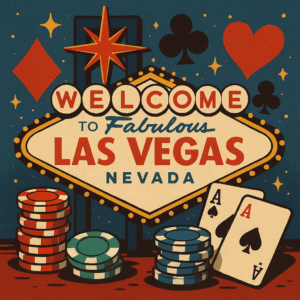
In the world of poker, your table image is a powerful tool that can influence the flow of a game. It shapes how other players perceive you based on your betting patterns, behavior, and overall presence at the table. By carefully crafting and managing your table image, you can manipulate the decisions of your opponents, giving you a strategic edge. In this article, we’ll explore the concept of table image, how to build it, and its impact on your poker success.
What Is Table Image?
Table image refers to how other players view your style of play. This perception is influenced by factors such as the hands you choose to play, how often you bet, and the level of aggression you display. A well-managed table image can become a psychological weapon, allowing you to exploit the tendencies of your opponents and lead them into making costly errors.
Imagine a scenario where you’ve been playing conservatively, only entering pots with premium hands. Your opponents start to see you as a cautious player, someone who only bets with a strong hand. Now, when you bluff, that same cautious image makes them more likely to fold, allowing you to control the action to your advantage.
Types of Table Images
1. Tight Player
Characteristics: Selective, cautious, and conservative with hand choices.
Strategic Advantage: A tight player’s bets are often respected, which allows them to get maximum value when they enter pots. Opponents are less likely to challenge them, leading to more successful bluffs or value plays.
2. Aggressive Player
Characteristics: Bets and raises frequently, putting pressure on opponents.
Strategic Advantage: An aggressive player can force opponents into difficult situations, building larger pots and increasing the chances of successful bluffs.
3. Loose Player
Characteristics: Plays a wide variety of hands and enters many pots.
Strategic Advantage: Loose players can catch their opponents off-guard by showing up with strong hands when least expected, benefiting from their unpredictable play.
4. Rock
Characteristics: Extremely tight, only playing premium hands.
Strategic Advantage: Rocks often induce bluffs from aggressive opponents and gain maximum value when they finally enter a hand.
Crafting Your Table Image
To create an effective table image, you need to be intentional with your strategy and actions. Here are some tips to help you craft the right image at the poker table:
1. Start Tight, Then Open Up
Begin the game with a cautious approach, playing fewer hands. This will establish a tight image in the eyes of your opponents. Once this perception is set, you can start loosening up your play, taking advantage of their expectations.
2. Mix Up Your Aggression
While aggression is important, balance it with careful hand selection. By mixing in occasional bluffs and semi-bluffs, you keep your opponents guessing, which strengthens your table image and makes your strong hands even more effective.
3. Adjust to Player Types
Be observant of the other players at your table. If they’re playing tightly, consider shifting to a more aggressive style to take advantage of their caution. On the flip side, tighten up against overly aggressive players to exploit their mistakes.
The Strategic Implications of Table Image
1. Inducing Action
A well-crafted table image can encourage opponents to act in ways that benefit you. If they perceive you as a cautious player, they might call your bets with weaker hands, thinking they can outplay you. This allows you to build bigger pots when you have a strong hand.
2. Exploiting Weaknesses
Your table image can help you identify and exploit the weaknesses of your opponents. If they see you as aggressive, they may start folding too often, letting you steal pots. If you’ve built a tight image, aggressive opponents may try to bluff, giving you opportunities to trap them.
3. Creating Misdirection
A well-managed table image can act as misdirection, obscuring your true intentions. For instance, if you’ve established yourself as a tight player and suddenly make a big bluff, your opponents may struggle to reconcile your actions with their perception of you, leading them to make costly mistakes.
The Importance of Self-Awareness
While it’s crucial to shape how others see you, being aware of your own table image is just as important. By understanding how you’re perceived, you can make strategic adjustments throughout the game.
1. Recognizing Your Image
Continuously evaluate how your table image is evolving during the game. Are you seen as aggressive or passive? Is your behavior giving off signals that opponents might misread? Being aware of these dynamics allows you to adapt and use your image to your advantage.
2. Adapting to Changing Dynamics
Poker is an ever-changing game. Your table image may shift as the game progresses, or as new players join and others leave. Be ready to adapt to these changes, recalibrating your strategy to fit the current dynamics.
Mastering Table Image
Your table image is a critical aspect of poker strategy that can dramatically impact your success at the table. By carefully managing how others perceive you, you can manipulate your opponents, exploit their weaknesses, and maximize your potential gains.
Remember, poker is as much about reading your opponents as it is about the cards in your hand. The real skill lies in crafting a persona that keeps your opponents on their toes, while allowing you to maintain control of the game. As you become more adept at managing your table image, you’ll find yourself not just playing poker, but mastering it.




























